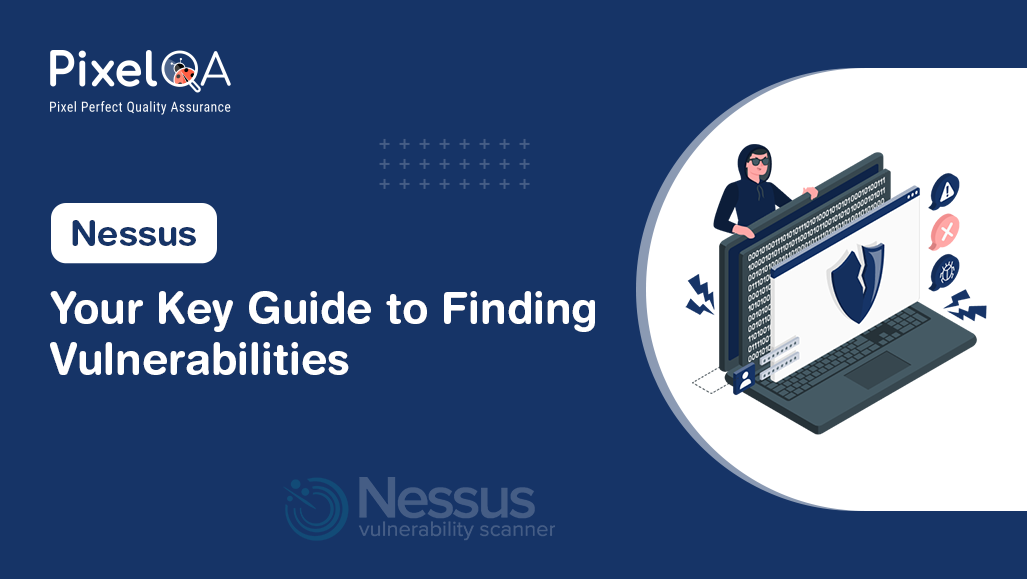
In the ever-evolving world of cybersecurity, keeping your advanced resources secure is more significant than ever. With threats continuously progressing, organizations of all sizes require strong security testing services to stay ahead of potential perils. Enter Nessus, one of the most well-known and trusted defenselessness scanners out there. But what absolutely is Nessus, and why should it be a parcel of your cybersecurity toolkit?
Table of Contents
- The Origins and Evolution of Nessus
- What Makes Nessus Stand Out?
- How Does Nessus Operate?
- The Scanning Process
- Why Nessus is Profitable
- Real-World Effect of Nessus
- Final Contemplations
The Origins and Evolution of Nessus
Nessus wasn’t continuously the cleaned, professional-grade apparatus we know nowadays. It began in 1998 as an open-source meander made by Renaud Deraison. The thought was basic: give a free, effective device that may filter systems for vulnerabilities. Over time, Nessus developed in notoriety, much obliged to its viability and ease of utilization.
In 2005, Valid, Inc. took Nessus beneath its wing, transitioning it from open source to a commercial item. Whereas this move blended a few contentions in the open-source community, it permitted Nessus to develop and advance into a more comprehensive and stronger device. Nowadays, Nessus is utilized by over 27,000 organizations around the world, making it a foundation in the field of vulnerability management.
What Makes Nessus Stand Out?
With so numerous defenselessness scanners on the showcase, you might ponder what sets Nessus separated. The reply lies in its combination of profundity, adaptability, and user-friendliness.
- Extensive Helplessness Scope: Nessus can recognize over 120,000 vulnerabilities, making it one of the most comprehensive scanners available. It covers everything from obsolete programs and lost patches to setup issues and potential backdoors.
- Normal Updates: Cyber threats are continuously progressing, and so is Nessus. Viable releases plugin overhauls periodically, ensuring that Nessus can recognize the latest vulnerabilities and threats.
- Ease of Utilization: One of the reasons Nessus remains so prevalent is its user-friendly interface. You don’t need to be a cybersecurity expert to use Nessus effectively. Its intuitive arrangement makes it open for both experienced IT specialists and newcomers alike.
- Customizable Checking Choices: Not all systems are the same, and Nessus understands that. You can tailor your checks to center on zones, whether it’s basic servers, sensitive information, or applications.
- Comprehensive Declaring: After a channel, Nessus produces point-by-point reports that are straightforward to get. These reports don’t fairly list the vulnerabilities; they give settings, clarifying why each issue exists and how you can address it.
How Does Nessus Operate?
Nessus employs a combination of methods to uncover vulnerabilities:
- Network Scanning: Nessus scans your network to identify open ports and services running on those ports. By examining these services, it can be determined whether they have known vulnerabilities or misconfigurations.
- Host Scanning: The tool inspects individual hosts (e.g., servers and workstations) for missing patches, outdated software, and configuration issues. This includes checking for known exploits that could be leveraged by attackers.
- Web Application Sifting: Nessus additionally surveys web applications for vulnerabilities such as SQL injection, cross-site scripting (XSS), and other common web-based threats. The progress of this project is not moving as expected, mainly impacted by resource constraints.
- Setup Reviews: Nessus can survey whether frameworks follow security best practices and compliance standards. This includes checking for configuration settings that might expose systems to risk.
The Scanning Process
Running a Nessus filter includes a few steps:
1. Configuration: Set up a filter by characterizing the target frameworks, selecting the type of check, and arranging the vital qualifications. Nessus supports various types of scans, from fundamental organized checks to progressed verified checks.
2. Execution: Nessus performs the filter, utilizing a combination of plugins (which are basically scripts that check for vulnerabilities) for performing manual software testing to target the frameworks.
3. Analysis: Once the filter is total, Nessus creates a comprehensive report enumerating the vulnerabilities found. This report incorporates data about each powerlessness, its severity level, and suggestions for remediation.
4. Remediation: With the bits of knowledge given by Nessus, IT groups can prioritize and address the distinguished vulnerabilities. This might include applying patches, changing setups, or upgrading programs to near security holes.
Why Nessus is Profitable
1. Proactive Security: Nessus helps organizations be proactive about cybersecurity by finding and fixing vulnerabilities before they can be exploited. This diminishes the chance of security breaches and makes a difference in keeping up a solid security posture.
2. Scalability: Whether you’re a little commerce or an expansive undertaking, Nessus scales to meet your needs. It can handle everything from single system checks to large-scale, organized appraisals.
3. Integration: Nessus coordinates with other security instruments and frameworks, upgrading its effectiveness as part of a broader security technique. It can complement other arrangements like intrusion detection systems (IDS) and security data and event management (SIEM) stages.
4. Cost-Effective: Nessus offers a range of estimating alternatives, making it available for different budgets. The value it provides in finding and fixing vulnerabilities can justify the investment.
Real-World Effect of Nessus
1. Early Location Spares Cash: Envision identifies security weaknesses before they are exploited. Nessus makes a difference organizations spot issues sometimes recently they have gotten to be serious. By addressing these issues early, companies can avoid costly data breaches and reduce financial damage from security incidents.
2. Simplifying Complex Security Needs: For numerous organizations, exploring the complexities of organized security can be overwhelming. Nessus rearranges this preparation with its user-friendly interface and comprehensive checking capabilities. It takes the mystery out of recognizing vulnerabilities, making it simpler for IT groups to oversee their security posture successfully.
3. Integration with Existing Frameworks: Nessus doesn’t work in confinement. It coordinates consistently with other security devices and frameworks, such as Security Information and Event Management (SIEM) stages and Intrusion Detection Systems (IDS). This integration improves overall security by providing a clearer view of an organization's security.
4. Customizable for Differing Situations: Each organization's security needs are unique. Nessus permits customization in its checking forms, empowering clients to tailor checks agreeing to their prerequisites. Whether it’s a little trade or a multinational organization, Nessus adjusts to different situations and necessities.
5. Continuous Change and Learning: Nessus is not inactive; it advances with the risk scene. Normal overhauls to its helpless database and filtering calculations guarantee that it remains successful against the most recent dangers. This Continued progress means Nessus stays relevant and profitable as modem vulnerabilities develop.
Final Contemplations
In today’s cybersecurity scene, remaining ahead of dangers is a consistent challenge. Nessus is a capable partner in this battle, offering a thorough way to block unnecessary things that are both effective and easy to understand for clients. Whether you’re running a little trade or overseeing an expansive venture, Nessus can help you ensure your organization and keep your information secure. By routinely checking for vulnerabilities and tending to them quickly and efficiently, you can altogether decrease your chance of a security breach and value a smarter idea more.
About Author

Rushi Mistry is a Security Tester at PixelQA Software Testing Company with a focus on cybersecurity. He is passionate about IoT penetration testing and is working towards obtaining a CISSP certification, with the ultimate goal of becoming a Chief Information Security Officer (CISO).


